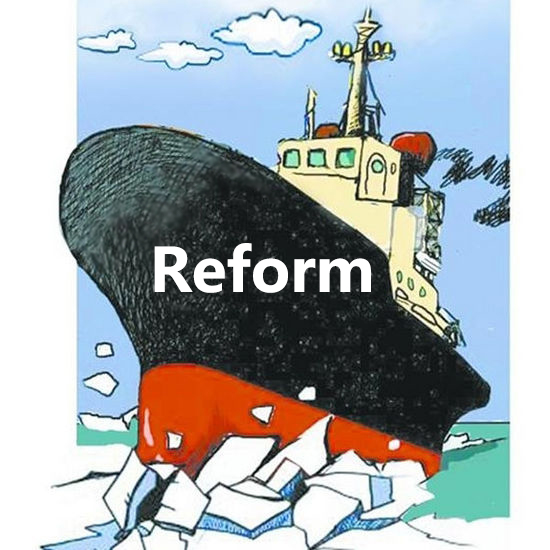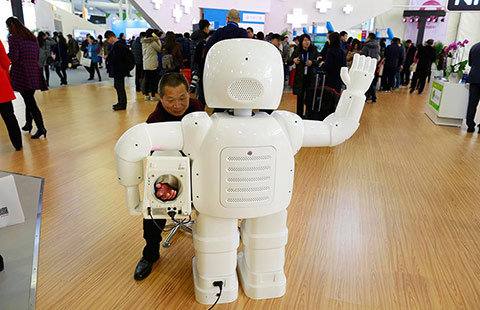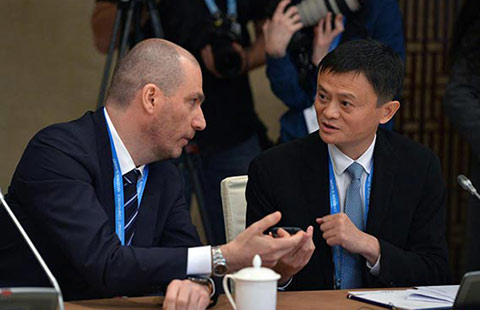Supply-side reform made top priority of key economic meeting
By Chen Jia (China Daily) Updated: 2015-12-19 09:31
The supply-side reform will be led by a series of policies to improve public service, environmental protection, quality of production and further opening-up to the global economic system.[Photo/China Daily]

Public service set to be improved and new demand created to spur growth
The country's top leaders are likely to introduce all-round "supply-side reform" at the annual Central Economic Work Conference, which began on Friday in Beijing.
"All signs are pointing in the same direction, that supply-side reform will command center stage next year," according to a policy review of the conference by China Minsheng Bank, one of the largest non-State banks.
As part of the Chinese decision-making process, leaders hold such a conference every December to review economic performance in the past year and to map out a strategy for the coming year.
Methods to implement the strategy and achieve related targets won't be finalized until early next year. But the underlying strategic thinking will be made clear by the official paper that is expected to come out a few days after the meeting.
A Web commentary by People's Daily called the supply-side reform "a profound change".
It will be led by a series of policies to improve public service, environmental protection, quality of production and further opening-up to the global economic system, it said.
In the most immediate move, the commentary said, the government will have to reduce housing inventories, and one way is to subsidize rural migrant workers so they can settle down in the cities where they work.
It should also shed excessive industrial capacity, especially in industries with low technology and poor market prospects, it said.
A third thing to do is to deepen reform of the financial system, so as to build a nationwide system of financial service, taxation and multiple layers of insurance, the commentary added.
Wang Yiming, vice-president of the State Council Development Research Center, said reform will definitely be the priority at the meeting.
GDP growth will be assigned secondary importance, economists said.
Some suggested that next year's GDP growth target should be lowered from "around 7 percent" this year to between 6.5 and 6.8 percent.
GDP growth in the first three quarters reached 6.9 percent year-on-year, down from the 7.3 percent last year.
The growth target won't be published until the National People's Congress in March.
This year's economic work conference is also expected to discuss the draft 13th Five-Year Plan (2016-20), which is aimed at doubling the 2010 level of GDP and per capita income by 2020, economists said.
It is also important for the government to guard against a sharp slowdown, said Li Dao-kui, director of Tsinghua University's Center for China in the World Economy.
Song Yu, Goldman Sachs chief economist in China, said, "China's economic conditions are expected to remain challenging." He predicted the GDP growth target will be set at 6.5 percent.
Min Lan Tan of UBS Wealth Management said signs of China's long-awaited economic transition "may be finally underway", and this may lead to a further slowdown. In 2020, "a 5.5 to 6 percent GDP growth is not unthinkable", she said.
UBS also expected a moderate depreciation of the yuan against the dollar over 12 months, taking the exchange rate to 6.80 yuan per dollar.
According to Jia Kang, director of the Ministry of Finance's Research Institute, supply-side reform means to use government policies to release and to create new demand so that China can keep up its growth momentum.
- Supply-side reform made top priority of key economic meeting
- Alipay now supports facial recognition login
- Wuzhen panelists say Internet requires global cooperation
- Chery 1st Chinese automaker to produce 5 million cars
- Vanke suspends trading after chair opposes shareholder's leveraged buying
- Sri Lanka aims to expand air links with China to attract more tourists
- Home price growth accelerated in Nov
- China explores ways to liberalize trade in 'green' goods
















